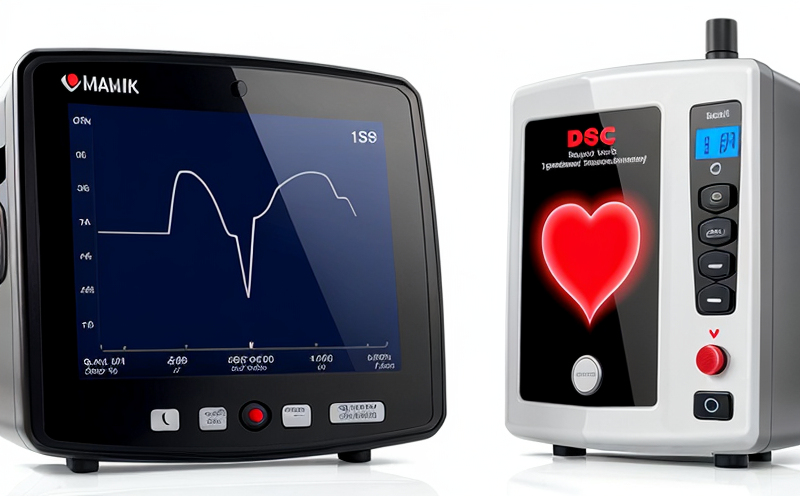ISO 14708-2 Pacemaker Lead Electrical Impedance Testing
The ISO 14708 series of standards is pivotal in the medical device industry, particularly for cardiac and cardiovascular devices. The second part of this standard, ISO 14708-2, specifically addresses the electrical impedance testing for pacemaker leads. This service ensures that pacemaker leads comply with stringent international quality assurance criteria, thereby enhancing patient safety.
The primary purpose of ISO 14708-2 is to evaluate the electrical characteristics of pacemaker leads, which are critical components in modern cardiac pacing systems. These leads transmit electrical signals between the heart and the pacemaker device itself. The testing procedure involves subjecting the lead to various electrical stimuli to assess its impedance behavior at different frequencies. Impedance is a measure of resistance that affects how well the lead can conduct current.
The standard specifies detailed procedures for both single and multi-electrode leads, ensuring comprehensive evaluation across all scenarios encountered in clinical use. The test setup typically includes specialized equipment designed to simulate real-world conditions under which these devices operate. This precision is crucial because even small deviations could lead to ineffective pacing or potential patient harm.
One of the key aspects of this testing is understanding how changes in impedance affect signal transmission quality. High electrical impedance can result in poor signal integrity, leading to improper pacing and reduced device efficiency. By adhering strictly to ISO 14708-2 guidelines, manufacturers ensure their products meet industry benchmarks for reliability and performance.
The process begins with thorough preparation of the pacemaker lead sample according to predefined specifications outlined in the standard. This includes cleaning the lead surface free from any contaminants that might interfere with accurate measurements. Once prepared, the lead is placed into a controlled environment where it undergoes multiple cycles of electrical stimulation at specified frequencies.
During each cycle, data points are collected on impedance values and other relevant parameters such as resistance and reactance. These metrics provide insights into the overall health of the lead’s insulation integrity and its ability to withstand various stresses during operation. Post-test analysis involves comparing measured results against established acceptance criteria laid down by ISO 14708-2.
Compliance with these standards not only demonstrates a commitment to quality but also helps protect patients from risks associated with substandard medical devices. For instance, non-compliant leads could fail prematurely or cause erratic pacing behavior, both of which are undesirable outcomes in life-sustaining equipment like pacemakers.
In summary, ISO 14708-2 is essential for ensuring that pacemaker leads function correctly and safely within their intended applications. By rigorously adhering to this international standard during production and quality control processes, manufacturers can produce reliable medical devices that meet stringent regulatory requirements while maintaining high standards of patient care.
Benefits
The implementation of ISO 14708-2 brings several advantages to both manufacturers and end-users. For producers, it ensures consistent product quality by providing clear guidelines on how to test pacemaker leads accurately. This consistency helps maintain brand reputation and fosters trust among healthcare providers.
From an operational perspective, compliance with this standard enhances efficiency through streamlined testing procedures that reduce time spent on non-conforming samples. Additionally, it reduces the likelihood of costly recalls due to design flaws or production errors.
For patients, perhaps most importantly, adherence to ISO 14708-2 translates into safer and more effective medical devices. Reliable pacemaker leads mean better treatment outcomes and improved quality of life for those relying on these technologies for their health.
Industry Applications
- Pacemaker Manufacturing: Ensures that pacemaker leads meet stringent electrical performance requirements, enhancing reliability and patient safety.
- Clinical Trials: Provides a standardized method for evaluating new pacemaker lead designs before they enter commercial use.
- R&D Departments: Supports the development of innovative pacing solutions by offering precise metrics to gauge progress.
Quality and Reliability Assurance
The rigorous testing procedures prescribed in ISO 14708-2 play a crucial role in maintaining product quality throughout the manufacturing process. Each step from initial design through final assembly is subject to thorough scrutiny aimed at identifying potential issues early on.
Manufacturers must maintain meticulous documentation of all test results, which serves as evidence of adherence to established standards. This record-keeping practice is vital for traceability purposes and facilitates troubleshooting should any discrepancies arise post-market release.
In addition to laboratory testing, field testing plays a significant role in validating the real-world performance of pacemaker leads. Real-time monitoring allows manufacturers to gather data on how devices behave under actual operating conditions. This information can then be used to refine existing products or inform future design iterations.
By integrating ISO 14708-2 into their quality management systems, companies demonstrate a proactive approach towards ensuring product excellence. Such commitment fosters long-term relationships with healthcare providers and ultimately contributes to improved patient outcomes.





